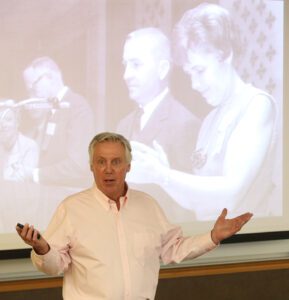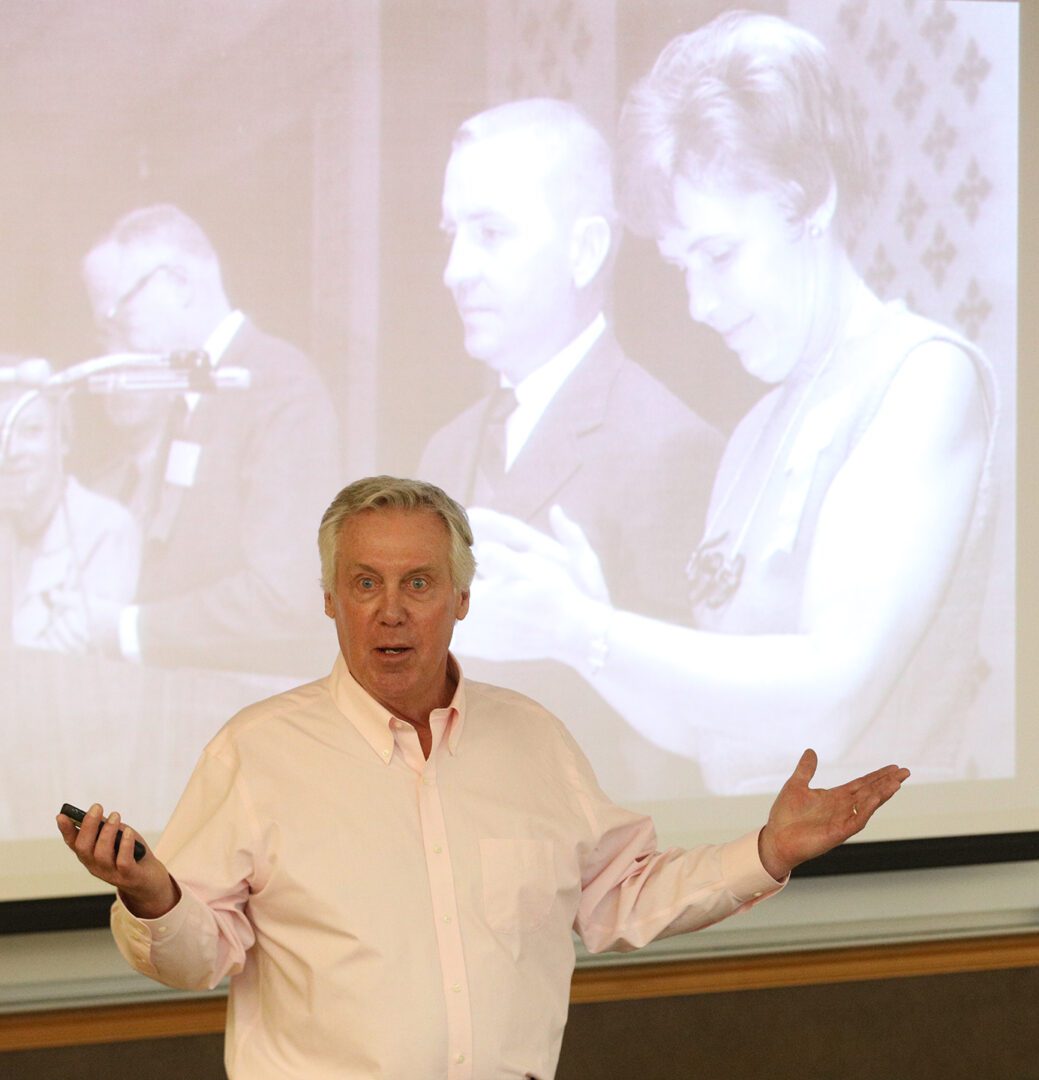MAPLE CITY SOAP
The success story of an early Procter & Gamble soap product begins with Monmouth College.
For the first three and a half years of its existence, the school that would become Monmouth College—Monmouth Academy—had no building of its own. When the decision was made in 1856 to elevate the academy to a college, local capitalist Abner Harding donated a lot at what is today the 500 block of North A Street, where a two-story brick building was erected, 40 x 80 feet in size.
Just three years later, it was evident that Monmouth College had already outgrown the building, and land for a new campus was donated east of the city limits. In the spring of 1863, a new building was completed on the site and the college students marched from the old building to occupy it.
But the old building, which consisted of eight rooms on the first floor and a chapel seating 300 on the second floor, would still prove useful to the college. In those days, the public school system did not offer a robust college preparation curriculum, so Monmouth College administered an Academical Department, providing two years of focused instruction in math, Latin and English. Known as The Academy, it took up quarters in the building on North A.
The Academy continued to operate in that building until 1876, when preparatory instruction was moved to the main campus. On Jan. 1, 1878, the building acquired a new name—“The Barracks”—and a new function: a boarding club for male Monmouth College students. Because there were no dormitories, fraternity houses or dining hall, men previously had to contract individually with private families for room and board. The Barracks (later spelled “Barrax”) allowed more than a dozen students to room together and hire a cook to prepare meals—an arrangement that would be popularized later by fraternities.
The Barracks finally closed down in 1884, as the building had become run down, while at the same time coeducational “eating clubs”—usually run by widows in their large, comfortable homes—were gaining popularity.
After sitting idle for a year, the former college property took on an entirely new function when it was purchased for $1,200 by Joseph Pease & Son. Pease was a 64-year-old retired farmer from Maine, who had farmed for years in Mercer and Rock Island counties. His son, Campbell Butler Pease, was an amateur chemist who had developed a “self-washing” soap. Used not only for laundry, but also for washing windows and dishes, Peases’s concoction was superior to the then-popular naphtha soap, which lost much of its potency in hot water.
The Peases had been operating a soap factory in Galesburg, but when they learned of the availability of the former college property, they decided to move their equipment to Monmouth, converting the building to a factory and naming the company Maple City Soap Works. The elder Pease built a fine home next to the factory, which still stands at 502 North A and for years housed the Forman book bindery.
In 1889, the Peases sold the growing business to two local entrepreneurs—hardware dealer Edgar C. Beedee and grocer William T. Wiley. The new owners almost immediately enlisted the help of one of Monmouth’s most successful capitalists, William Hanna. The Maple City Soap Co. was incorporated in 1890, with Weir as president and major stockholder, Beedee as vice president and Wiley as secretary-treasurer.
Soon, business was booming. In 1892, a separate office was built in front of the factory. Beedee, a born promoter, traveled the country making sales. At the 1893 Warren County Fair, he displayed giant bars of soap, including one the size of a cupboard weighing half a ton. The non-union company ran into some trouble later that year when the American Federation of Labor placed a boycott on the soap—instructing laborers not to purchase his products.
But Maple City Soap continued to thrive. In 1894, newspapermen visiting Monmouth for a convention toured the facility and wrote about it in their papers—one account noting that one of the caldrons held 24,000 gallons of soap. In 1895, Monmouth’s Republican Atlas Printing Co. received a contract to print four million soap wrappers.
After Wiley sold his interest in the company in 1897, Hanna began to take a stronger interest in its running and decided to construct a modern factory. In 1900, work began on a four-story building, containing 80,000 square feet, on South First Street. Among its amenities were five large boilers, 14 feet in diameter, extending from the first to the third floor. Each was 26 feet deep with a capacity of 150,000 pounds. The factory also contained a box factory for manufacturing wooden soap crates and its own plan for generating electric light. An added benefit was the factory being located on a spur of the Iowa Central Railway, allowing the shipping of 1,600 75-pound boxes (five carloads) of soap each day.
Tragedy struck just before Christmas, when Hanna was thrown from his buggy near Cameron and killed. His son, J. Ross Hanna, succeeded him as president, and his daughter, Mrs. W.B. Brereton, as vice president. The new building was occupied in April 1901, and the old college building, which had long since outlived its usefulness, was torn down, with the space converted to residential building lots.
The remarkable size of the factory did not limit it to soap manufacture. Soon other companies filled the space, including Maple City Manufacturing Co. (making oil cans) and the Boss Manufacturing Co. (making mittens), and later the Monmouth Acetylene Gas and Electric Manufacturing Co. (making miner’s lights and electric generators).
One of the most memorable displays at the 1905 Illinois State Fair was a giant rotating globe with a large cake of soap above it and a sign reading “Maple City Soap: The Best on Earth.” Thousands of samples were given away.
By 1907, the success of the Maple City brand had drawn the attention of the Procter & Gamble Co. of Cincinnati, maker of Ivory Soap, which successfully put in a bid to buy both the name and the equipment. At this point, Campbell Pease—original formulator of Maple City Soap—stepped forward and vowed to bring soap manufacturing back to Monmouth. He purchased the College City Soap Factory in Galesburg (maker of Knox soap) and in 1908 made arrangements to move the equipment to the Milne Stump Puller Works on South Eighth Street. For reasons unknown, however, the move never occurred and Pease continued to operate the factory in Galesburg until his retirement. Procter & Gamble would, however, continue to sell Maple City Soap nationwide well into the 1920s.
The former soap plant on South First Street continued to thrive, with the Monmouth Acetylene Gas and Electric Manufacturing Co. also taking up residence there in 1907. The factory was destroyed by fire in 1917, although a small portion was saved and housed the Monmouth Fruit Co. for several decades.














